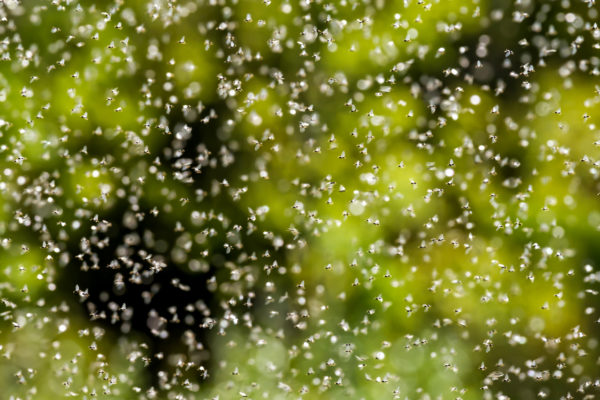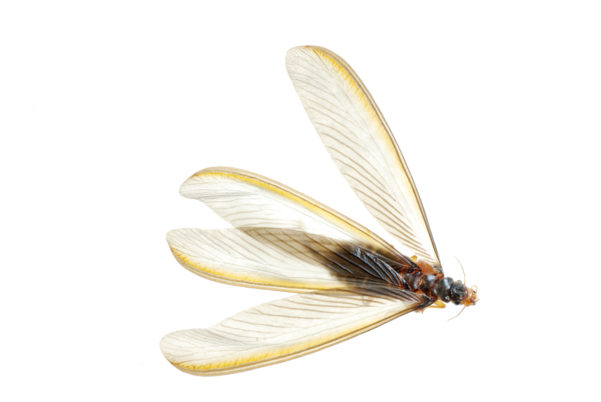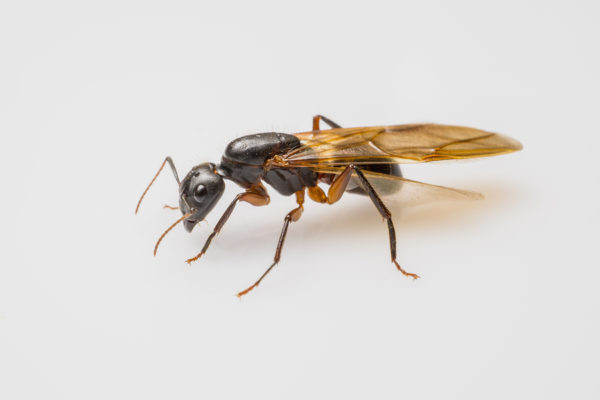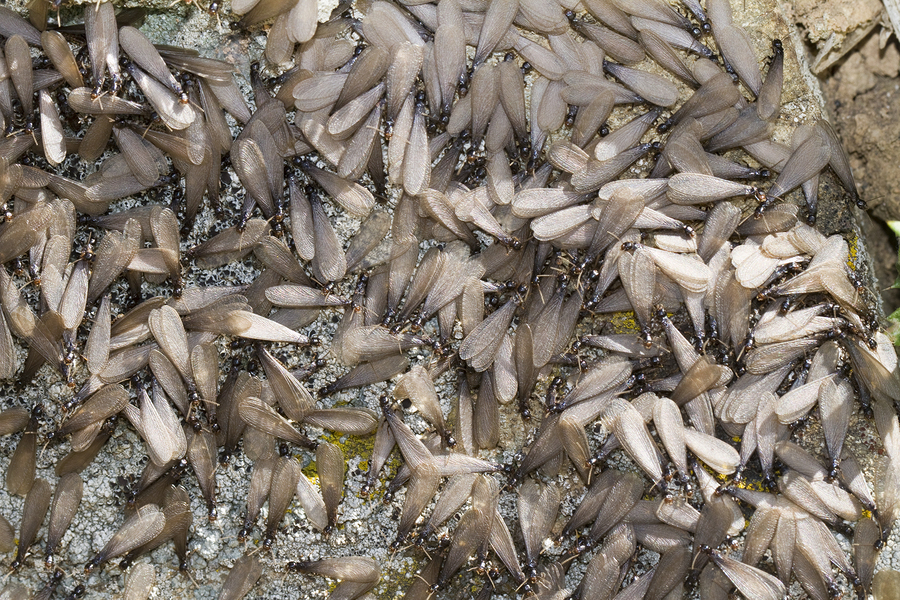READY TO GET STARTED?
REQUEST A FREE ESTIMATE
Fill out the form below or call (888) 466-7849 for a free, no-obligation estimate.

The change of season from winter to spring brings warm weather, sunshine, and … bugs! This is the time of year when many pests emerge from overwintering and begin the mating process. Spring is also known as swarm season – because this is the time when termites and flying ants emerge in droves, sometimes in swarms of thousands! While flying ants can cause problems in and around your home, termites are much more common – and much more costly! How can you tell if those swarming insects are terrible termites or flying ants? Check out our handy reference below for the key differences between the two, as well as what to do if you have these pests swarming in or near your home.

Termites usually swarm once a year for reproduction and expansion of their colonies. Swarms mark the official beginning of termite season. Subterranean termites swarm in spring and during the daytime. Drywood termites swarm in late summer and early fall. Dampwood termites swarm in the summer.
Termites swarm after their colony reaches a certain size and the weather conditions are optimal. The termites are attracted to light and are often found near windows and light fixtures. Swarming termites will try to squeeze through racks and crevices in your walls and foundations to try and reach open air. If you see swarming termites then there is a good chance there is a well-established termite colony in or near your home.

Flying ants will swarm in late spring and early summer. They have to have bright sunlight, low winds, high humidity, and warm temperatures to swarm. They prefer to swarm after there has been 3 to 5 days of rain.
Flying ants swarm for the same reasons as termites – to reproduce and expand their colonies. Flying ants don’t represent any greater threat to humans than their wingless counterparts. Flying ants aren’t as significant a threat to your home as termites but they can still cause damage. If you have flying ant swarms in your home there is a good chance you have an established ant colony in your walls.
So now that you can identify exactly what kind of pest is swarming around your home, what should you do next?

The first official day of spring is Sunday, March 20th (the earliest arrival of spring of our lifetime so far in the Northern Hemisphere, according the the Old Farmer’s Almanac). This is also the first official day of termite season!
Termites cause billions of dollars in structural damage each year in the U.S. Don’t let your home be part of the statistic! Here are some things you can do to prevent termite damage:
It’s also important to know what to look for. Identifying a termite infestation early is key in preventing damage to your home. Termites swarm in the spring and although swarming termites don’t cause damage, it’s a sign of a destructive termite colony nearby. Swarming termites are often mistaken for flying ants; they have two pairs of long narrow wings, equal in size and, unlike other termites in the colony, are dark or black in color. Warm or wet weather brings termite (subterranean) swarmers out of their nest, typically during daytime hours, to start new colonies. They’re attracted to light so you’ll most likely see swarming termites around windows, doors, and light fixtures, or the wings they sometimes leave behind.
If you notice termite swarmers in your home, it’s a good indication of an established termite colony nearby, that could be causing significant structural damage. If you have an active termite warranty, call your exterminator and request a termite inspection. If termite activity is found, you should be provided with termite treatment options and, depending on your warranty’s coverage, damage repair solutions.
If you don’t currently have termite protection, call a professional termite control company immediately. They will provide a thorough inspection of your home (usually free) and give you the best treatment options to eliminate the active termites and prevent a future termite infestation. Be sure your pest control provider offers multiple warranties with damage repair options. Some even offer lifetime damage repair warranties with termite baiting systems, like Sentricon Always Active, an eco-friendly alternative to termite control.

You probably aren’t too concerned with termites just yet, with the recent icy weather here in Georgia and the Southeast. BUT…prevention is key to preventing termite damage and now is the time to get prepared.
In the South, termites start swarming in early Spring. So if you don’t already have a termite control plan, it’s time to think about getting one. While swarming termites do not cause structural damage, it’s a sign that a termite colony is hard at work nearby. This could mean severe structural damage to your home that will result in hundred and thousands of dollars in repair costs. So what’s the solution?
There are several methods of termite control and deciding which termite treatment is right for your home can be overwhelming. After all, we’re talking about protection for one of your largest investments! And since termite damage typically isn’t covered by homeowners insurance, it’s important to not only have your home treated, but to have a solid termite warranty.
If you have a really good understanding of how termites work, you could attempt DIY termite control. There are several options for this from traditional liquid barrier treatments to termite baiting systems. This can be a difficult task if you have any slabs attached to your home or a basement. A liquid barrier must be complete with no breaks in order to keep termites out. Want a pro? Keep reading.
Some pest control companies will recommend a liquid treatment if you have active termites or damage. This provides instant and long-term termite protection. Make sure your termite company includes a good warranty with your treatment, ideally one that covers termite re-treatments and any damage caused post-treatment.
This type of termite treatment is ideal when your home is in the construction phase. The wood frame is treated with a product called borates, elements from the earth, that will give you permanent termite protection and also help ward off common household pests.
Baiting Systems are proven effective at eliminating entire termite colonies underground around your home, less invasive than liquid treatments, ideal for new and existing construction, and usually come with a lifetime warranty. It’s also the environmentally-responsible way to protect your home from termites, by eliminating the use of hundreds of gallons of chemicals. With Sentricon Always Active, our preferred choice for baiting systems, monitoring devices are placed in the ground strategically around your the perimeter of your home. The devices have a bait tube inside that termites are attracted to. Termites will find the stations, eat the bait and share with their colony, resulting in colony elimination.
1. Keep mulch away from your home’s perimeter. This is a food source for termites.
2. Keep any items made of wood away from your home. Firewood, cross ties, that construction project you’ve been working on…all are potential food sources for termites.
3. Keep your gutters cleaned. Termites love moisture so keeping the ground around your home dry is key.
If you see a swarm of “flying ants”, it’s probably termites. Find out more on how to tell termites from ants here.
Termite swarmers will usually leave behind small transparent wings. If you see anything like this around your home, call an exterminator.
For more specific information on termite control in your area: